On the map, the Lisbon Metro station Avenida looks fairly close to the Jardim Botânico de Lisboa. It is, but it turns out to be close to the walled-off backside of the garden. Some serious uphill walking is between you and the Lisbon Botanic Garden’s public entrance, via a twist of small streets and a sizable public staircase.
Not a bad thing, necessarily. We got an up close look at the neighborhood: the tilework, apartments and small shops (including one selling tile to builders), and some of the enormous amount of graffiti that Lisbon sports.

We passed by a few of the many construction projects in the Portuguese capital. Development goes on, despite a recent drop in residential sales in response to higher interest rates, because Lisbon residential properties fetch more than twice what they did 10 years ago, according to Cushman & Wakefield data.
The faux façade draping over this site was amusing. That’s what it will look like, we promise!
A larger development, also apartments.
A redevelopment — tear down — opportunity along the way.
The view from atop one of the public staircases along the way, which is a pedestrian continuation of the street below.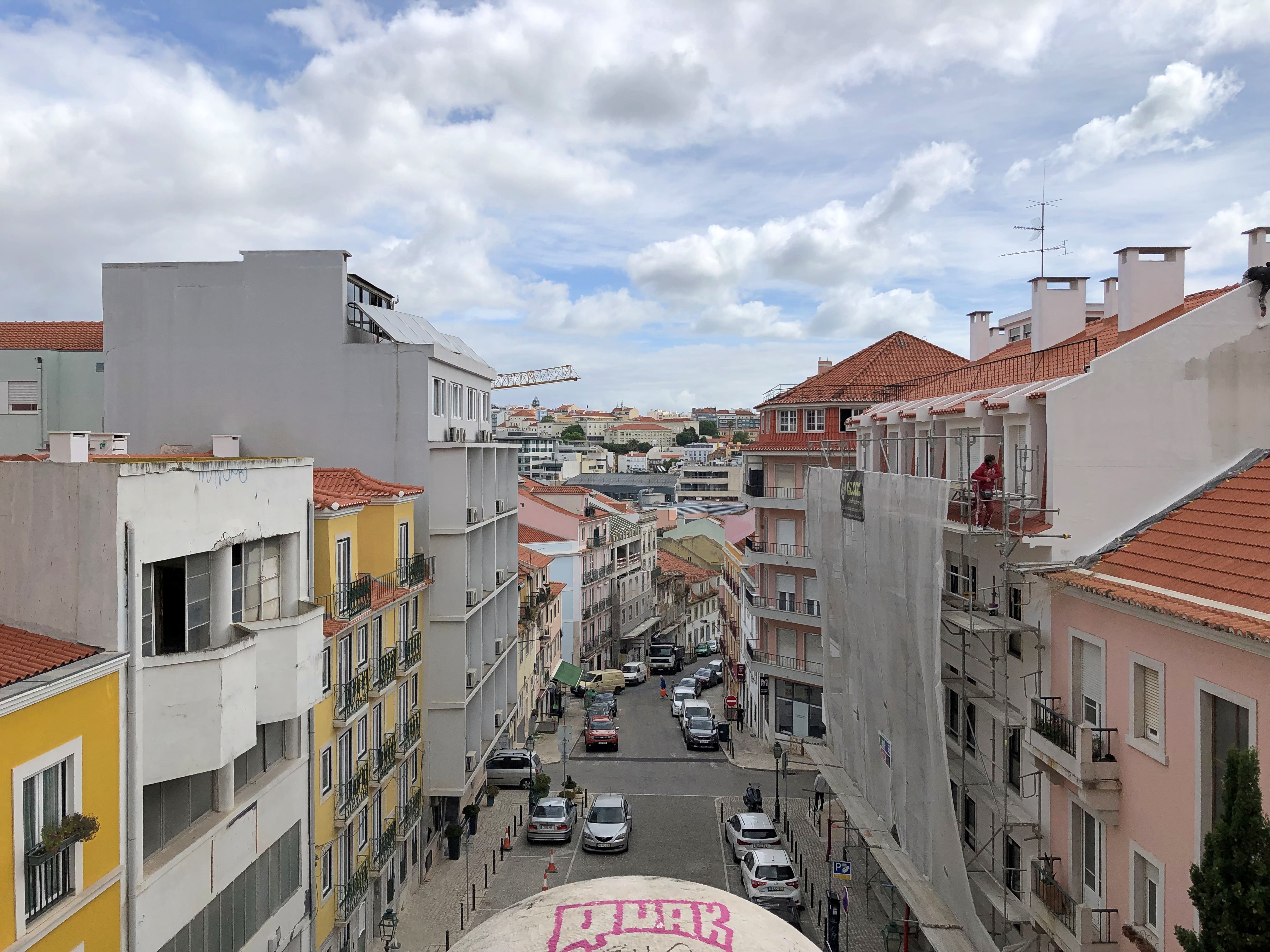
So some effort was expended to get to the garden, but it turned out to be worth it.
That’s how to get off the beaten path. Just a little lateral movement from that path.
Not a lot of the masses of overseas visitors to the city seemed to be at the Lisbon Botanic Garden. The place wasn’t empty, but you could enjoy pleasant walks through the lush springtime greenery without much in the way of crowding. For some reason, we heard more German at the garden than anywhere except Sintra later in the week, where one can hear many European and non-European languages.
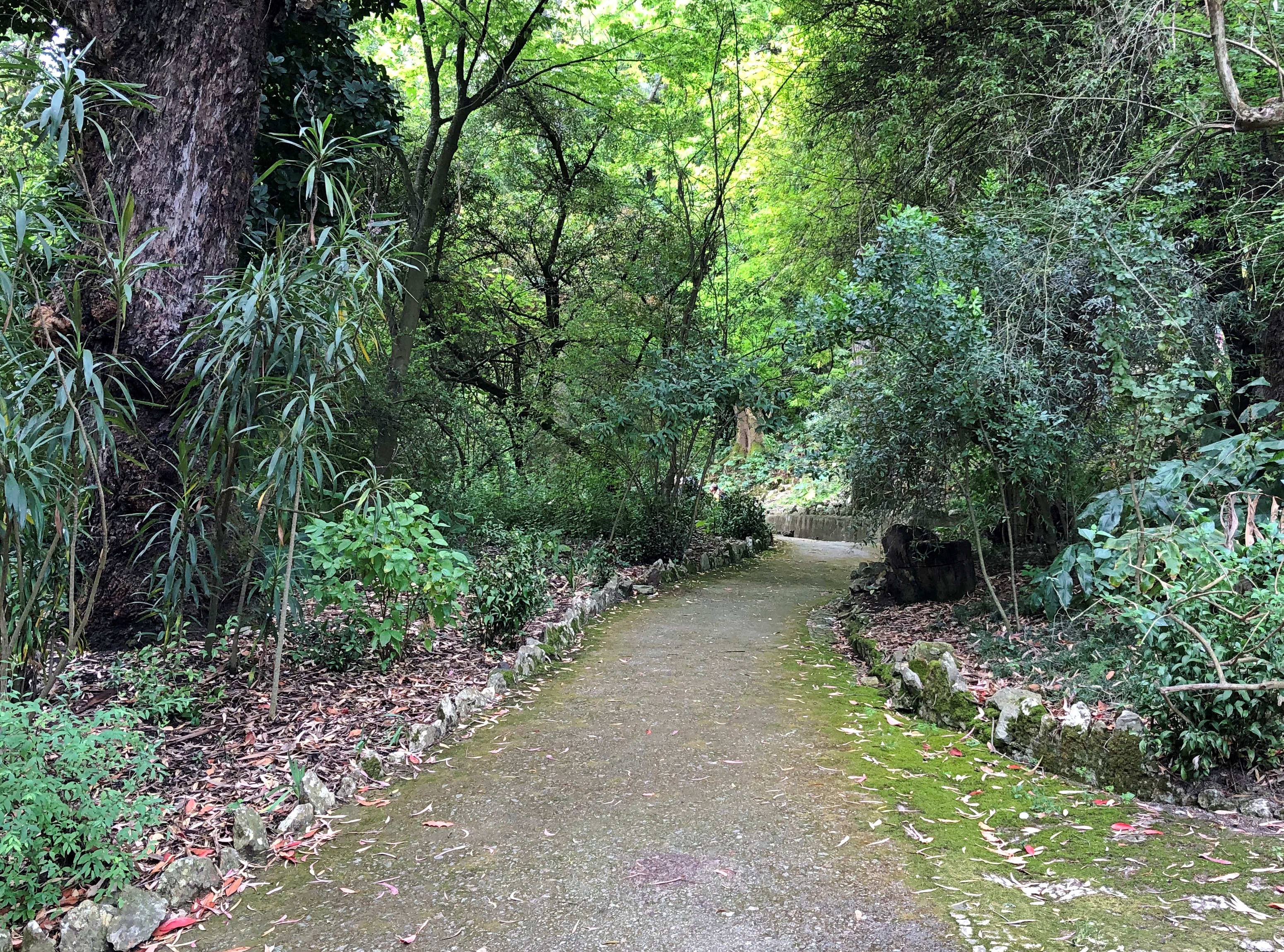

It won’t be much of a botanic garden without lots of plants to examine.
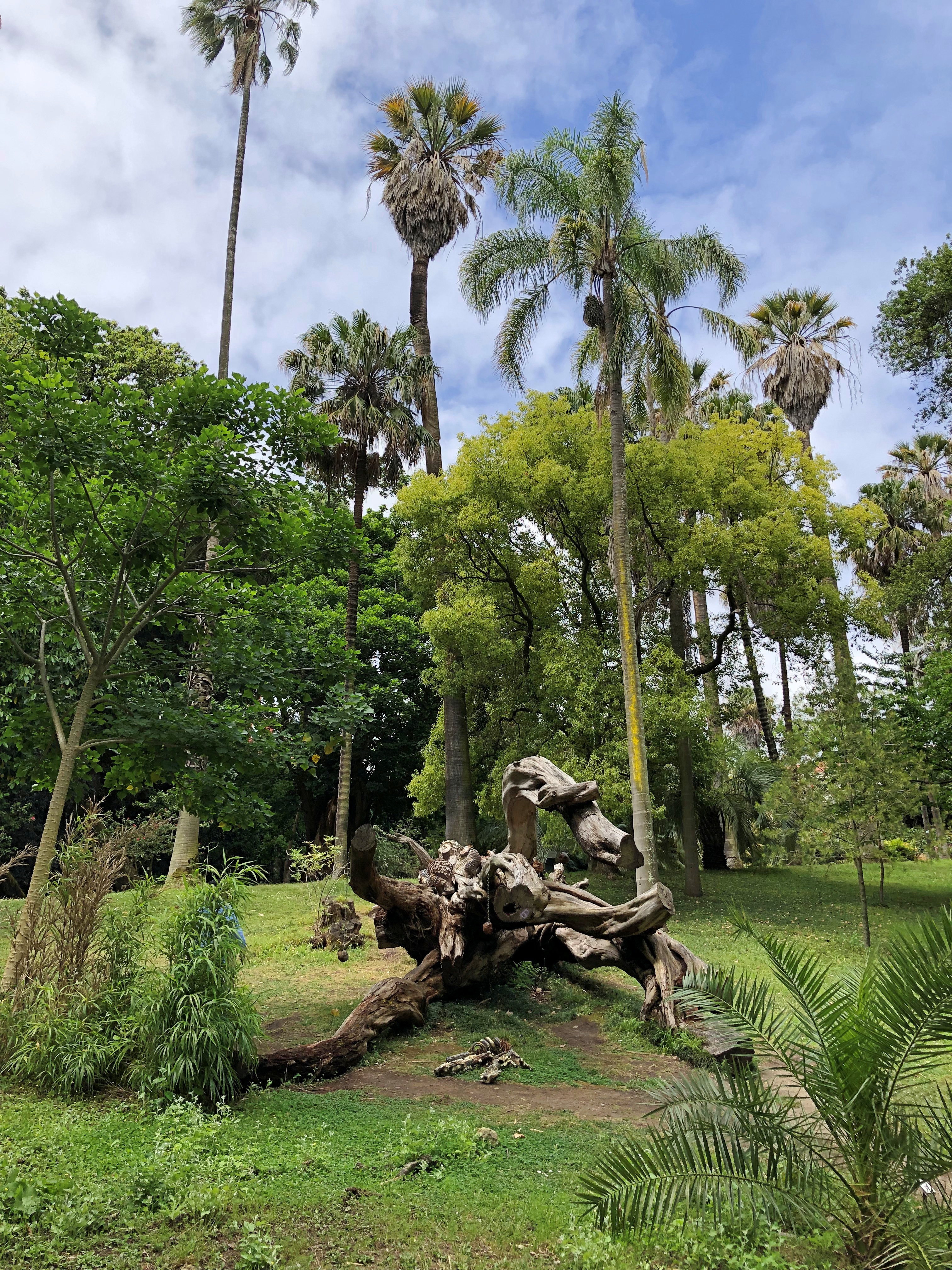
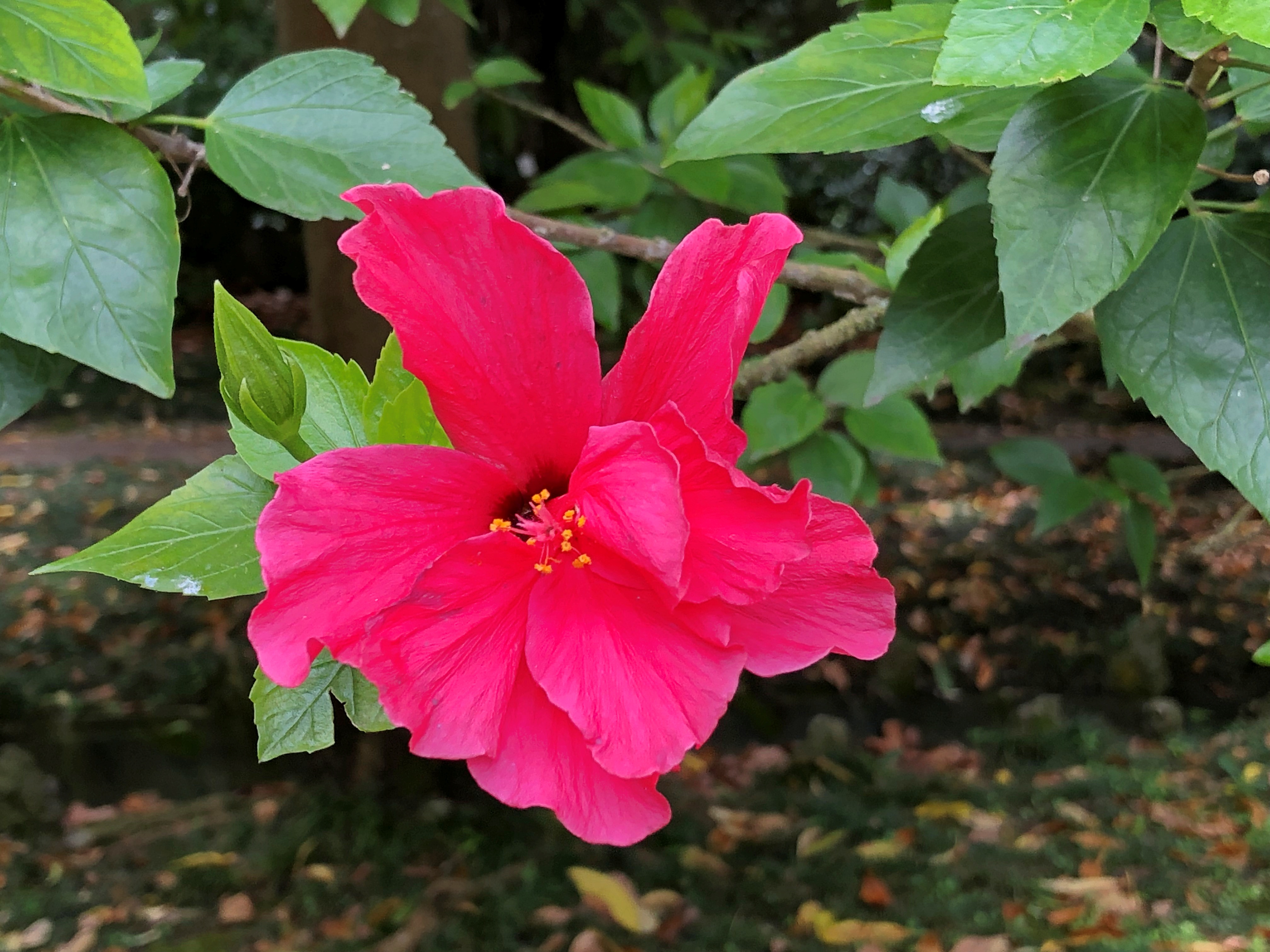
Artwork is nestled among the greenery. Or sometimes on the bare patches or in the fallen timbers.

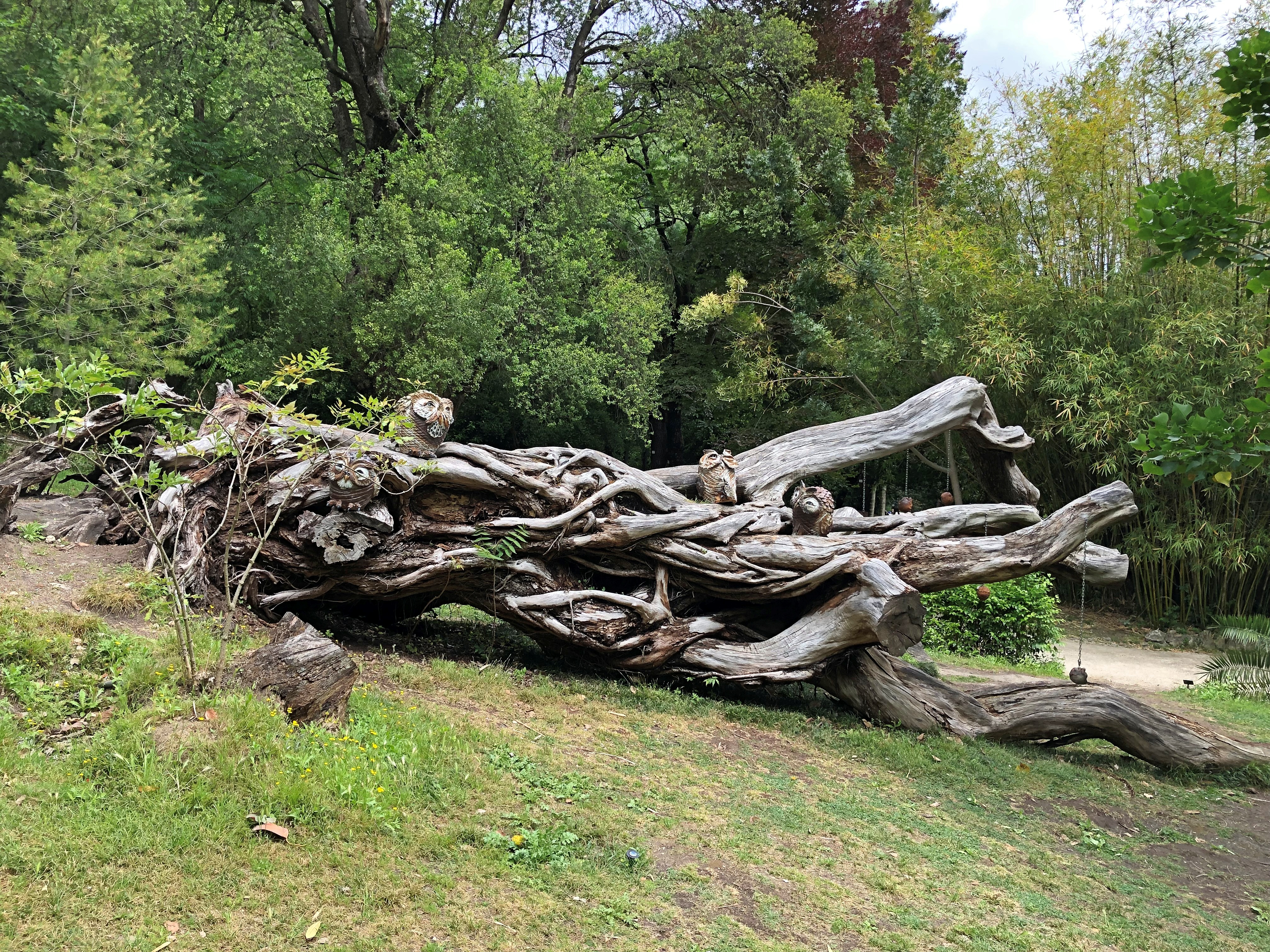
A favorite: ants overrunning a picnic. Really big ones. If ants were actually that big in Portugal, the country might not be such a tourist destination.
“Ants Picnic” by Tara E. Bongard, an Anglo-Portuguese artist.
Toward the end of our visit, I noticed this.
Araucaria Heterophylla: The mighty Norfolk Island pine.
Funny-looking tree, straight up like a pole with ridges. Not true pines, as it happens, and not native outside the South Pacific.
I don’t remember when I heard about them, but hear about them I did, years ago, maybe in one of the histories of Australia that I read. I didn’t think I’d seen one before with my own eyes. There it was. There they were, since the gardens include more than one. Everything else was very nice, but that really made my visit. (Just my visit, no one else was impressed.)
DKTS and I bought a potted Norfolk Island palm in 1981 or 1982 as a Christmas tree, with the idea that we could use it again the next year and the year after and so on. It was two or three feet tall. As it happens, it was too cold in El Paso for it to be left outside in the winter and it didn’t flourish in the pot indoors either. It served for that Christmas (whichever it was) but was gone long before the next one.